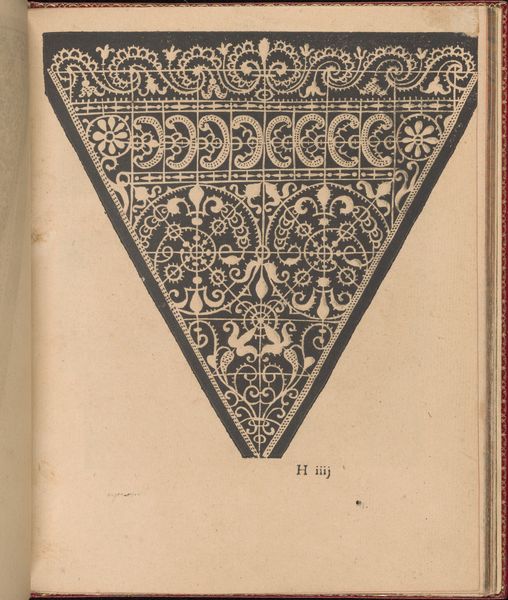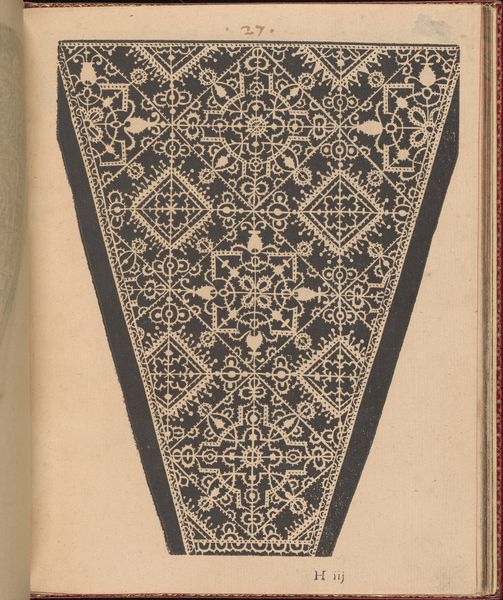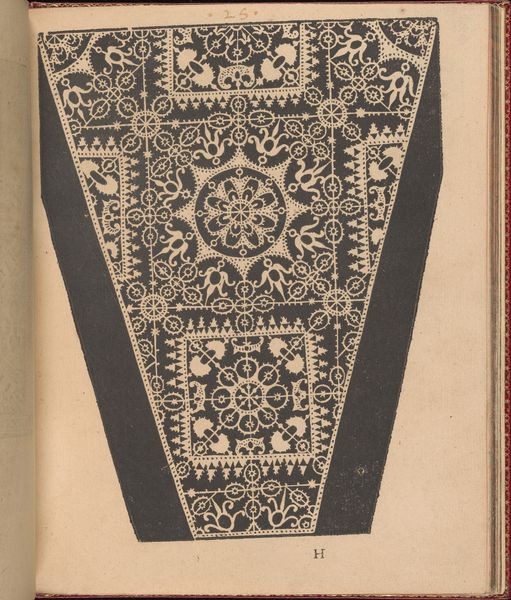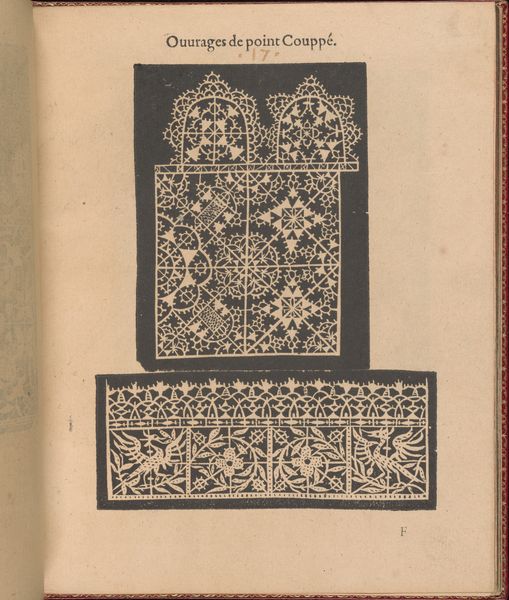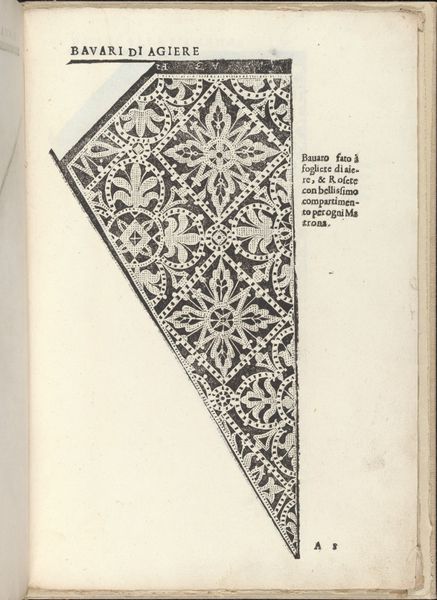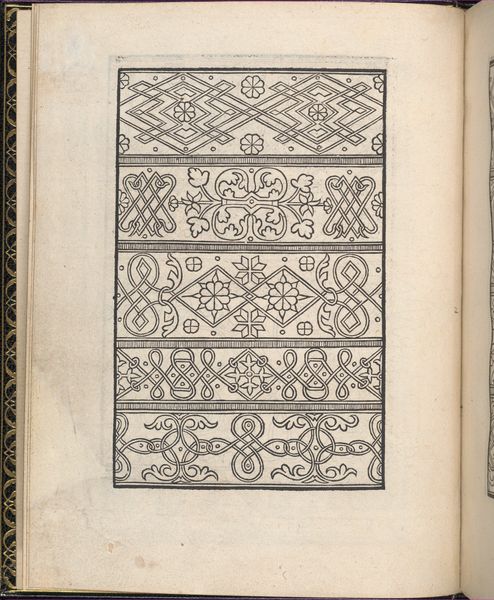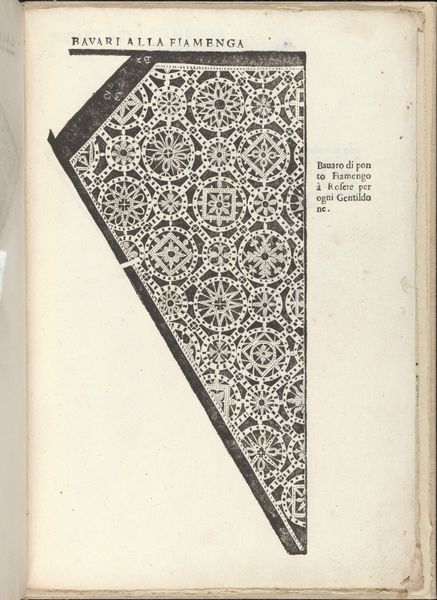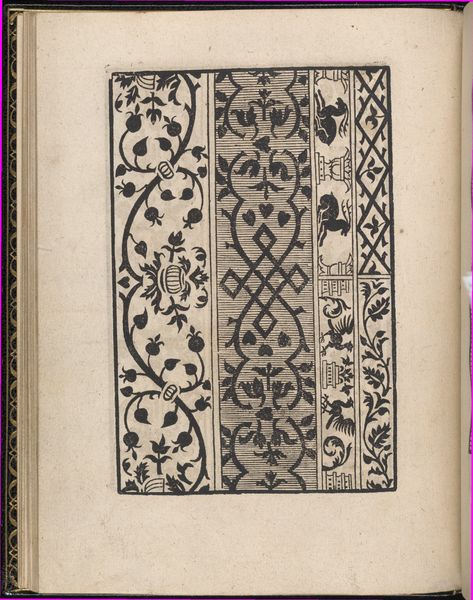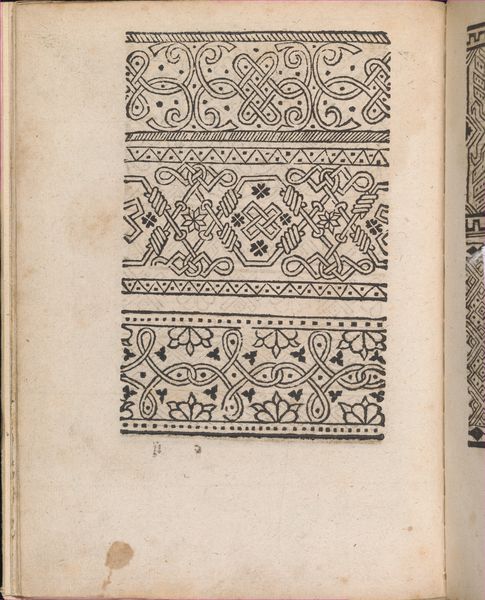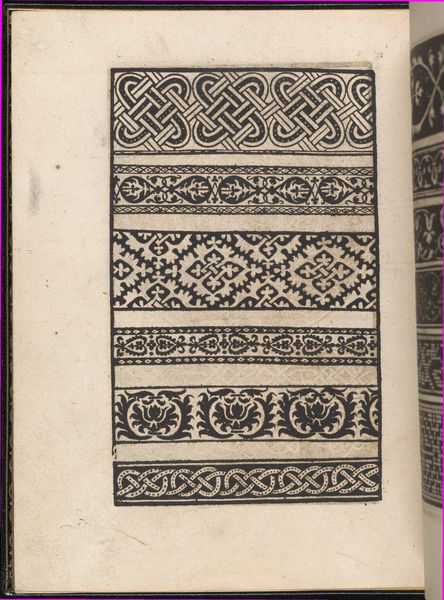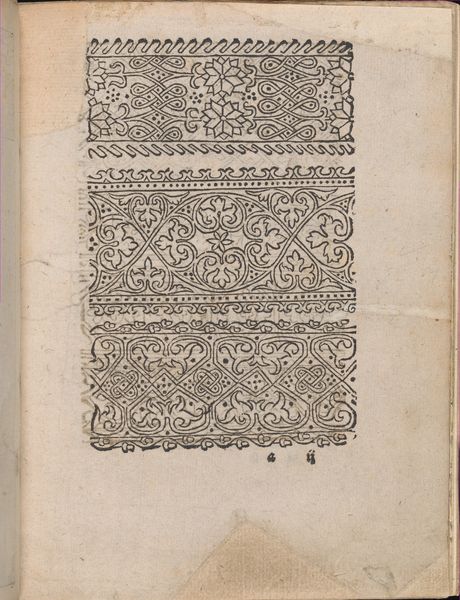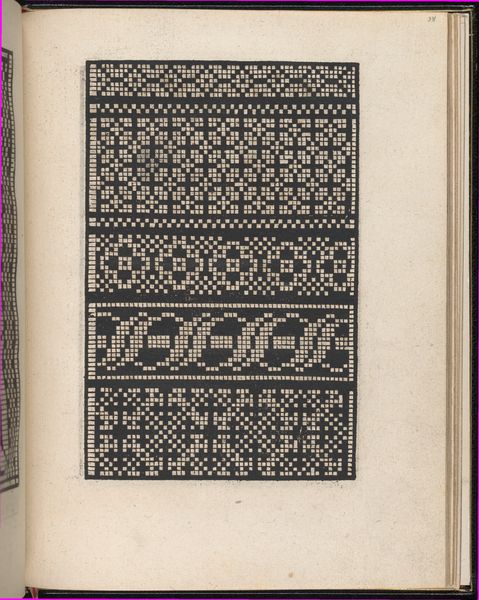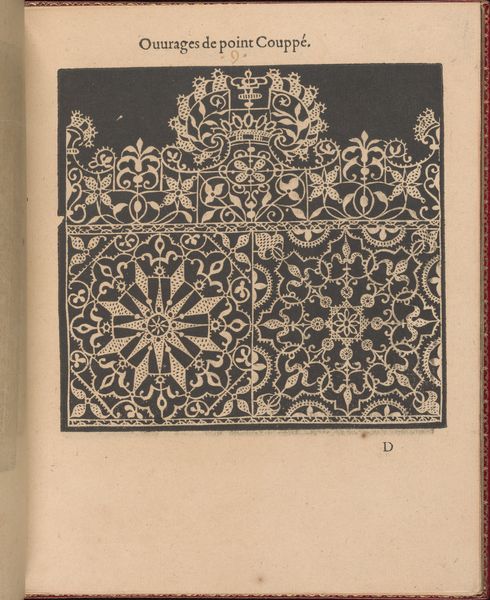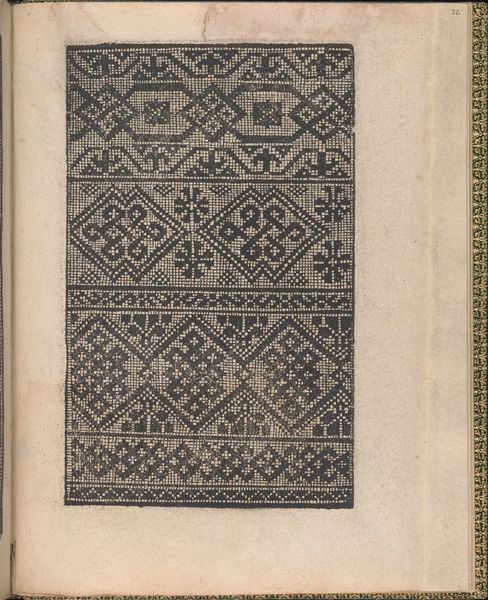
Les Singuliers et Nouveaux Portraicts... page 30 (recto) 1588
0:00
0:00
drawing, ornament, print
#
drawing
#
ornament
#
toned paper
#
ink paper printed
# print
#
book
#
old engraving style
#
personal sketchbook
#
linocut print
#
pen-ink sketch
#
men
#
pen work
#
sketchbook art
#
coloring book page
#
marker colouring
Dimensions: Overall: 8 1/16 x 6 5/16 in. (20.5 x 16 cm)
Copyright: Public Domain
Curator: Here we have a print titled "Les Singuliers et Nouveaux Portraicts... page 30 (recto)" from 1588, attributed to Federico de Vinciolo. It's currently housed at the Metropolitan Museum of Art. The print consists of ink on paper and shows a design. Editor: My first impression is of incredibly intricate, almost lace-like pattern. The stark contrast between the black design and the toned paper is visually striking. What purpose did it serve? Curator: It's a page from a book of embroidery patterns. Vinciolo was quite influential in disseminating these designs, shaping needlework trends in the late 16th century. Think about how these books democratized design. Editor: Democratization is a key word. The printing press allowed these designs to reach wider audiences, empowering women in particular to engage in artistic creation, challenging existing gendered power structures in the artistic world at the time. Curator: Exactly. And if you consider the geometric patterns and stylized floral motifs, these designs reflect the period's fascination with classical forms and natural elements. Think about how such patterns were adapted for clothing or household decoration. Editor: Beyond domesticity, were such intricate designs also deployed in statecraft, or politics somehow? To maybe signal status, wealth or allegiance? Curator: Oh, absolutely. Embroidered clothing signaled status and wealth. Consider the elaborate ruffs and gowns of the Elizabethan era. Ornamentation like this played a part in constructing visual power, class distinctions. Editor: Seeing this image today I am interested in how something like the reprinting and redistribution of such ornamental prints may or may not disrupt historical ideas about value, authenticity and cultural ownership. It speaks to accessibility, even disruption in ways that I really connect with. Curator: Yes! Thinking about our contemporary moment, we can appreciate the work as both a historical artifact and an accessible source of creative inspiration for today's digital creators, who challenge notions of authorship, property and more traditional forms of hierarchy. Editor: So, we have gone from design book for embroidered artifcats to current disruption of our perceptions and presumptions, it is incredible. Curator: Absolutely, it reveals hidden patterns, if you will, which can lead us towards entirely new perceptions.
Comments
No comments
Be the first to comment and join the conversation on the ultimate creative platform.
